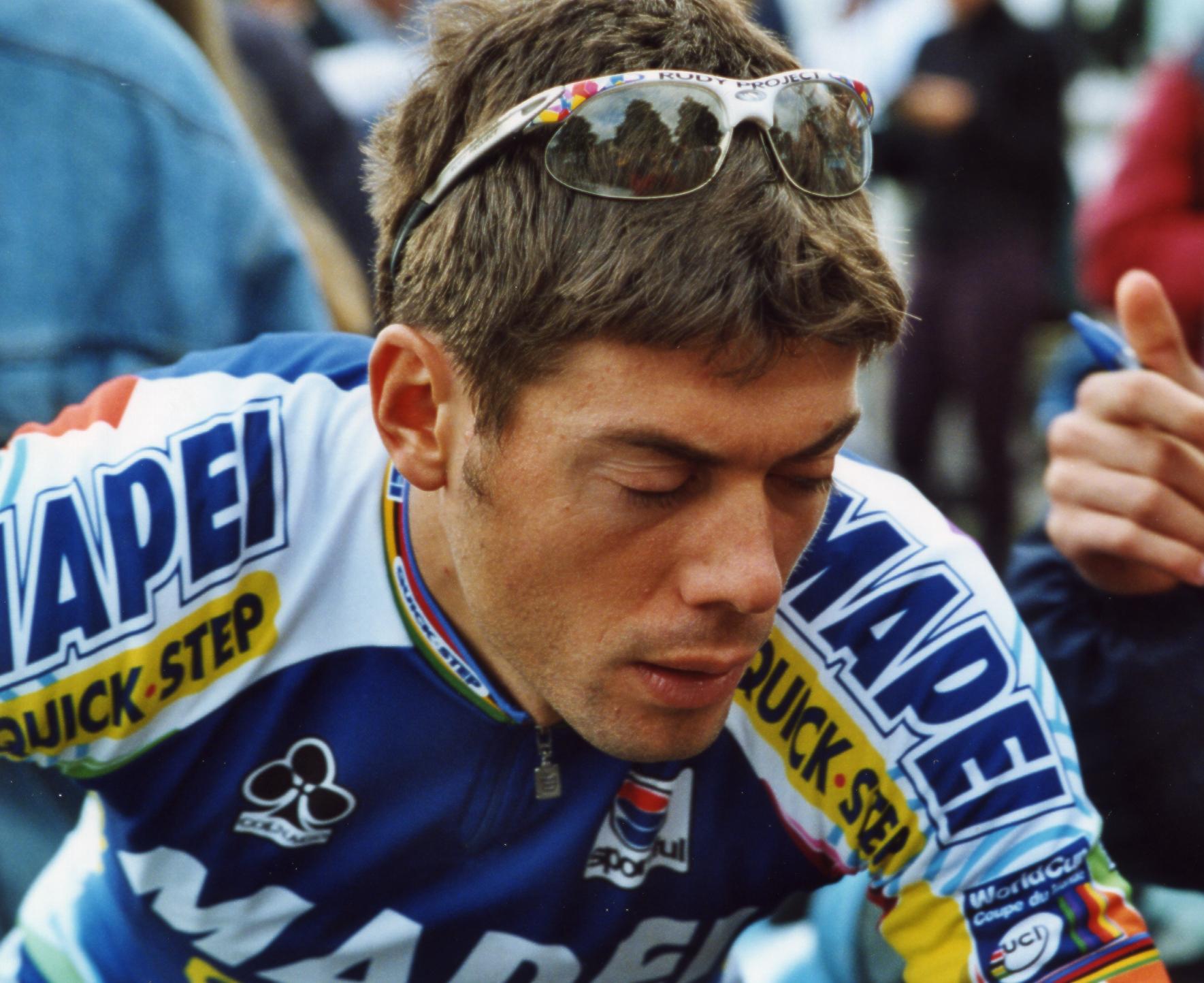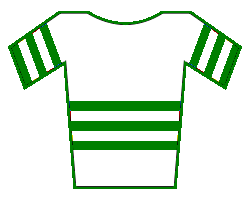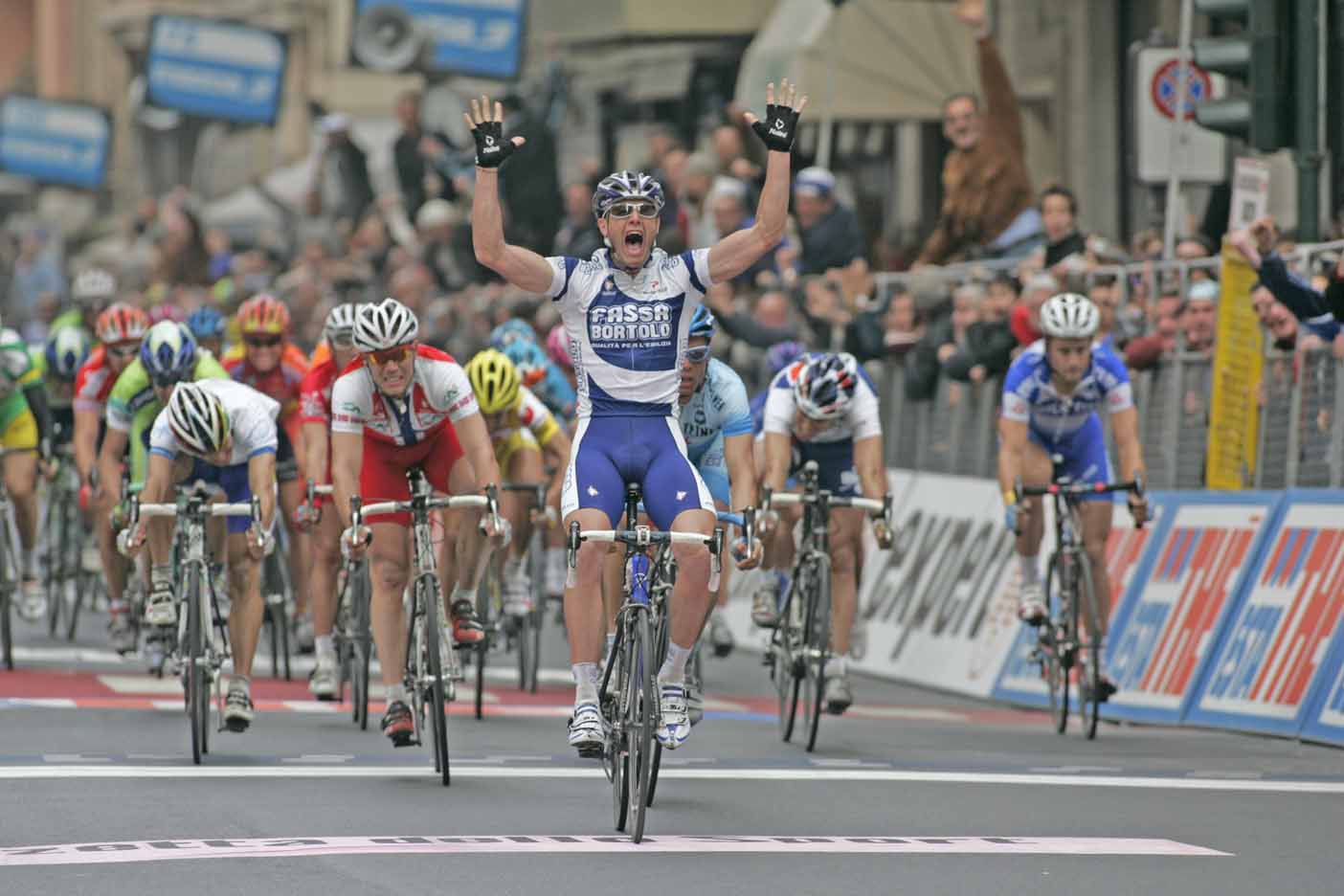|
2004 Milan–San Remo
The 2004 Milan–San Remo cycling race was the 95th edition of the monument classic Milan–San Remo and was won for the first time by Spaniard Óscar Freire of . It was held on 20 March 2004 over 294 kilometres. Four times winner Erik Zabel lifted his arms to celebrate too soon and Freire won by 3 centimeters by a bike throw at the line. Results References External linksResults {{DEFAULTSORT:Milan - San Remo, 2004 2004 2004 was designated as an International Year of Rice by the United Nations, and the International Year to Commemorate the Struggle Against Slavery and Its Abolition (by UNESCO). Events January * January 3 – Flash Airlines Flight 60 ... March 2004 sports events in Italy 2004 in Italian sport Milan-San Remo 2004 in road cycling ... [...More Info...] [...Related Items...] OR: [Wikipedia] [Google] [Baidu] |
Óscar Freire
Óscar Freire Gómez (born 15 February 1976) is a Spanish former professional road bicycle racer. He was one of the top sprinters in road bicycle racing, having won the world championship three times, equalling Alfredo Binda, Rik Van Steenbergen, Eddy Merckx and Peter Sagan. In the later years of his career, he became more of a classics rider. He won the cycling monument Milan–San Remo three times, the green jersey and four stages in the Tour de France and seven stages of the Vuelta a España, throughout a successful career. Despite his diminutive stature, Freire was a world class sprinter. He had a training philosophy where he rode shorter distances than most professional cyclists, sometimes covering only about half the distance his colleagues would. When growing up he contracted tuberculosis and narrowly avoided having a leg amputated.Fotheringham, A. (2014). The Exile. In: E. Bacon and L. Birnie, ed., ''The Cycling Anthology: Volume One''. London: Yellow Jersey Press, ... [...More Info...] [...Related Items...] OR: [Wikipedia] [Google] [Baidu] |
Max Van Heeswijk
Max Lambert Peter van Heeswijk (born 2 March 1973 in Hoensbroek, Limburg) is a Dutch retired professional road racing cyclist. He finished 15th road race at the 2000 Summer Olympics and 17th in the road race at the 2004 Summer Olympics. Career achievements Major results ;1992 : 1st Omloop Alblasserwaard ;1993 : 2nd Overall Sachsen-Tour : 2nd Ronde van Limburg ;1994 : 1st Stages 2, 12, 13 & 15 Commonwealth Bank Classic : 1st Stage 1 Teleflex Tour : 2nd Ronde van Vlaanderen U23 ;1995 : 1st Hel van het Mergelland : 1st Stages 2 & 4 Tour of Galicia : 1st Stage 3 Tour de Luxembourg : 1st Stage 3 Niederösterreich Rundfahrt : 9th Paris–Brussels ;1996 : 1st Stage 2 Tour of the Netherlands : 1st Stage 4 Tour of Galicia : 3rd Overall Tour of Sweden ;1997 : 1st Stage 22 Vuelta a España : 2nd Clásica de Almería : 9th GP Rik Van Steenbergen ;1998 : 1st Profronde van Heerlen : 1st Stage 3 Tour of Austria : 1st Stage 4 Vuelta a Andalucía : 3rd Trofeo Luis Puig : 4th Omloop H ... [...More Info...] [...Related Items...] OR: [Wikipedia] [Google] [Baidu] |
2004 In Italian Sport
4 (four) is a number, numeral and digit. It is the natural number following 3 and preceding 5. It is a square number, the smallest semiprime and composite number, and is considered unlucky in many East Asian cultures. Evolution of the Hindu-Arabic digit Brahmic numerals represented 1, 2, and 3 with as many lines. 4 was simplified by joining its four lines into a cross that looks like the modern plus sign. The Shunga would add a horizontal line on top of the digit, and the Kshatrapa and Pallava evolved the digit to a point where the speed of writing was a secondary concern. The Arabs' 4 still had the early concept of the cross, but for the sake of efficiency, was made in one stroke by connecting the "western" end to the "northern" end; the "eastern" end was finished off with a curve. The Europeans dropped the finishing curve and gradually made the digit less cursive, ending up with a digit very close to the original Brahmin cross. While the shape of the character for ... [...More Info...] [...Related Items...] OR: [Wikipedia] [Google] [Baidu] |
March 2004 Sports Events In Italy
March is the third month of the year in both the Julian and Gregorian calendars. Its length is 31 days. In the Northern Hemisphere, the meteorological beginning of spring occurs on the first day of March. The March equinox on the 20 or 21 marks the astronomical beginning of spring in the Northern Hemisphere and the beginning of autumn in the Southern Hemisphere, where September is the seasonal equivalent of the Northern Hemisphere's March. History The name of March comes from '' Martius'', the first month of the earliest Roman calendar. It was named after Mars, the Roman god of war, and an ancestor of the Roman people through his sons Romulus and Remus. His month ''Martius'' was the beginning of the season for warfare, and the festivals held in his honor during the month were mirrored by others in October, when the season for these activities came to a close. ''Martius'' remained the first month of the Roman calendar year perhaps as late as 153 BC, and several religious ... [...More Info...] [...Related Items...] OR: [Wikipedia] [Google] [Baidu] |
Peter Van Petegem
Peter van Petegem (born 18 January 1970) is a former professional road racing cyclist. Van Petegem last rode for Quick Step-Innergetic, in 2007. He lived in Horebeke. He was a specialist in spring classics, one of ten riders to win the Tour of Flanders and Paris–Roubaix in the same season. He also earned a medal at the World Championship on two occasions; taking the silver in 1998 and winning the bronze in 2003. His last race was the GP Briek Schotte in Desselgem on 11 September 2007. Personal life His sons, Axandre Van Petegem and Maurits Van Petegem, are also competitive cyclists. Major results ;1988 : 2nd Road race, National Junior Road Championships ;1990 : 2nd Circuit du Hainaut ;1991 : 1st Internationale Wielertrofee Jong Maar Moedig : 8th Circuit du Hainaut : 8th Gran Premio della Liberazione ;1992 : 3rd Overall Paris–Bourges ;1993 : 6th Overall Tour d'Armorique : 6th Trofeo Luis Puig : 10th Cholet-Pays de la Loire ;1994 : 1st Scheldeprijs : 2nd Omloop Man ... [...More Info...] [...Related Items...] OR: [Wikipedia] [Google] [Baidu] |
Miguel Ángel Martín Perdiguero
Miguel Ángel Martín Perdiguero (born 14 October 1972 in Madrid) is a Spanish former professional road racing cyclist. He finished his career riding on the UCI ProTour for the Phonak Hearing Systems cycling team, with whom he had ridden since 2005. His career highlights include winning the Clásica de San Sebastián and capturing the overall, points, and mountains competitions along with three stages at the Volta a Catalunya in 2004. Major results ;1998 : 1st Stage 1 Grand Prix International Mitsubishi MR Cortez : Vuelta a Mallorca ::2nd Trofeo Manacor ::3rd Trofeo Alcúdia ;1999 : 1st Clásica a los Puertos de Guadarrama : 1st Stage 1 Vuelta a Burgos : 2nd Clásica de Alcobendas : 2nd Subida al Naranco : 3rd Escalada a Montjuïc ;2000 : 1st Overall Vuelta a La Rioja ::1st Points Classification ::1st Stage 4 : 1st GP Llodio : 1st GP Miguel Indurain : 9th Clásica de San Sebastián ;2001 : 1st Stage 1 Vuelta a Asturias : 1st Stage 1 Clásica Internacional de Alcobendas ;2 ... [...More Info...] [...Related Items...] OR: [Wikipedia] [Google] [Baidu] |
Paolo Bettini
Paolo Bettini (born 1 April 1974) is an Italian former champion road racing cyclist, and the former coach of the Italian national cycling team. Considered the best classic cycle races, classics specialist of his generation, and probably one of the strongest of all times, he won gold medals in the 2004 Athens Olympics road race and in the 2006 UCI Road World Championships, 2006 and 2007 UCI Road World Championships – Men's road race, 2007 World Road Race Championships. He is nicknamed ''Il Grillo'' ("the cricket") for his repeated sudden attacks and his Sprinting specialist (cycling), sprinting style. He gained prominence by winning Liège–Bastogne–Liège in 2000 and 2002. He set the record for World Cup wins in a season in 2003, winning the Milan–San Remo, HEW Cyclassics and Clásica de San Sebastián. He won the Giro di Lombardia in 2005 and 2006, the Züri-Metzgete in 2001 and 2005 and Tirreno–Adriatico in 2004. Career Early career Paolo Bettini lived with his family ... [...More Info...] [...Related Items...] OR: [Wikipedia] [Google] [Baidu] |
Romāns Vainšteins
Romāns Vainšteins (born 3 March 1973) is a former professional road bicycle racer from Latvia. He won the road race at the 2000 World Cycling Championship. Career He won the road race at the 2000 World Cycling Championship in Plouay, France. At the end of the race, he won the sprint for the line ahead of Zbigniew Spruch and defending champion Óscar Freire. Following his world title, Vainšteins moved to the team under Patrick Lefevere. Even with some impressive results, such as third place in the 2001 Paris–Roubaix, he was unable to follow up on the success of his world championship. He left the team after the 2002 season and raced with Vini Caldirola and for two more years before retiring. In 2017, Vainsteins returned to Latvia to work as the coach of the Latvian national cycling team after his unanimously appointment as head coach of the men’s national team. He also helped with coaching the under-23, junior, youth, and women’s teams. Controversy In March 20 ... [...More Info...] [...Related Items...] OR: [Wikipedia] [Google] [Baidu] |
Igor Astarloa
Igor Astarloa Askasibar (born March 29, 1976) is a retired cyclist from Spain. Career Astarloa turned professional with the Italian cycling team and enjoyed his best season in 2003 with team when he won the Flèche Wallonne and the road race title at the World Cycling Championships at Hamilton, Canada. The following year, he joined , but when the team temporarily stopped racing due to a doping scandal, he was released to join . During the 2006 transfer season it was announced that he was to leave Team Barloworld, the Continental Circuit team for which Astarloa had ridden for the last several years, and join Team Milram, a member of the UCI ProTour. Team Milram terminated its contract with Astarloa in May 2008 following disclosures that he had shown "irregular blood values", as reported by Focus magazine. He joined the Amica Chips-Knauf team, which folded in May 2009. Soon after, in June 2009, Astarloa was one of the first five riders to fall foul of the Union Cycliste In ... [...More Info...] [...Related Items...] OR: [Wikipedia] [Google] [Baidu] |
Alessandro Petacchi
Alessandro Petacchi (born 3 January 1974) is an Italian former professional road racing cyclist, who rode professionally between 1996 and 2015. A specialist Cycling sprinter, sprinter, Petacchi has won 48 Grand Tour (cycling), grand tour stages with wins of the points jersey in the Giro d'Italia in 2004 Giro d'Italia, 2004, the Vuelta a España in 2005 Vuelta a España, 2005 and the Tour de France in 2010 Tour de France, 2010. He also won the classics 2005 Milan–San Remo, Milan – San Remo in 2005 and 2007 Paris–Tours, Paris–Tours in 2007. His career spanned over 18 years during which he earned 183 victories. In 2007, Petacchi was banned from cycling and had his results achieved disqualified for doping. The court later said that he had not cheated on purpose but had not taken enough care when consuming his legal asthma drug. He announced his retirement as a lead sprinter on 23 April 2013, and terminated his contract at ,. He rejoined the professional peloton in August ... [...More Info...] [...Related Items...] OR: [Wikipedia] [Google] [Baidu] |
Erik Zabel
Erik Zabel (; born 7 July 1970) is a German former professional road bicycle racer who raced for most of his career with Team Telekom. With 152 professional wins and 211 wins in his career, he is considered by some to be one of the greatest German cyclists and cycling sprinters of all time. Zabel won a record nine points classifications in Grand Tour (cycling), grands tours including the points classification in the Tour de France six consecutive years between 1996 and 2001 and the points classification in the Vuelta a España in 2002, 2003 and 2004. Zabel won the Milan–San Remo four times and numerous six-day track events. He was one of the few road cyclists of recent times who raced all year, including track cycling in winter. For season 2012 he joined as sprint coach. He previously held that same position with the team until their dissolution. Zabel admitted to doping from 1996 to 2003. He is the father of cyclist Rick Zabel. Early life and amateur career Zabel grew up in ... [...More Info...] [...Related Items...] OR: [Wikipedia] [Google] [Baidu] |
Spain
Spain, or the Kingdom of Spain, is a country in Southern Europe, Southern and Western Europe with territories in North Africa. Featuring the Punta de Tarifa, southernmost point of continental Europe, it is the largest country in Southern Europe and the fourth-most populous European Union member state. Spanning across the majority of the Iberian Peninsula, its territory also includes the Canary Islands, in the Eastern Atlantic Ocean, the Balearic Islands, in the Western Mediterranean Sea, and the Autonomous communities of Spain#Autonomous cities, autonomous cities of Ceuta and Melilla, in mainland Africa. Peninsular Spain is bordered to the north by France, Andorra, and the Bay of Biscay; to the east and south by the Mediterranean Sea and Gibraltar; and to the west by Portugal and the Atlantic Ocean. Spain's capital and List of largest cities in Spain, largest city is Madrid, and other major List of metropolitan areas in Spain, urban areas include Barcelona, Valencia, Seville, ... [...More Info...] [...Related Items...] OR: [Wikipedia] [Google] [Baidu] |





